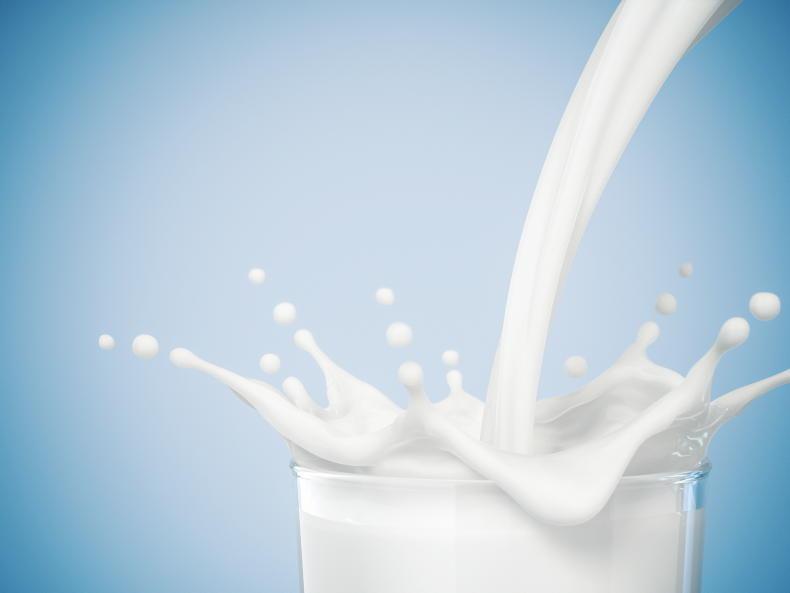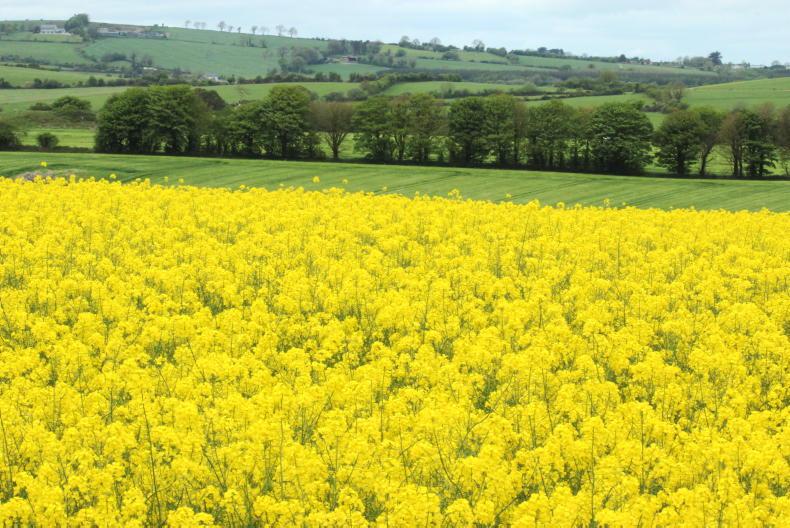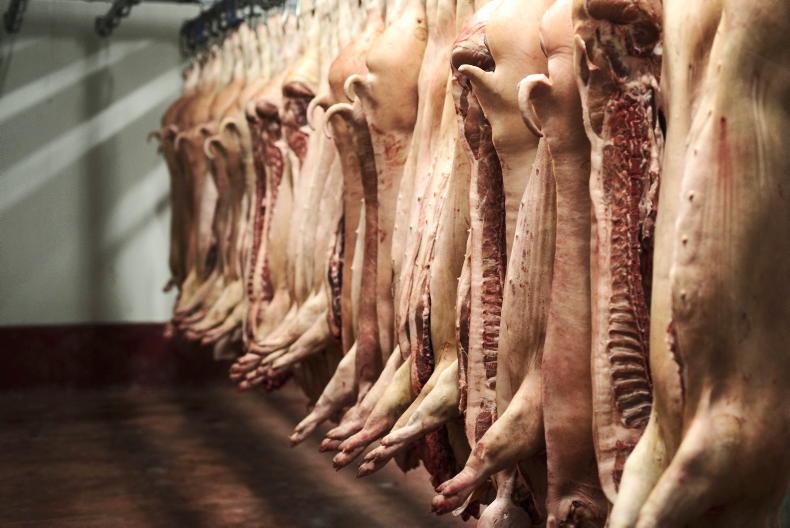Production of cereals, proteins, milk, beef and pigmeat are all estimated to be back in 2022 relative to 2021.
An EU summer report published late last week shows production estimates for 2022 will all be back relative to the previous year based on various macroeconomic issues and weather patterns.
There is significant increased interest in this EU report this year given the war in Ukraine, EU policy changes sparking farmer protests in many European countries and logistical challenges for trade compounded by exceptionally high energy prices.
Every year, the EU releases a summer report predicting the production of key foods for EU member states based on spring-planting areas and weather patterns.
Published late last week the predictions this year show cereals will be back relative to 2021, milk production will be back and meats, especially beef production, will be back relative to 2021. This is the first time in a very long time all key production estimates predict a negative production result.
When we layer EU farming and food policy on top of an already reducing production aligned to continued drought events in parts of the EU, it clearly shows the challenges facing EU policymakers.
The immediate challenge is balancing a global environmental agenda beside a declining EU food production despite food demand predicted to increase.
The impact of this supply and demand dynamic is increasing prices for all the main commodities and that is exactly what is playing out.
However, environmental policies among other issues are now prohibiting what up to now might have seen an increase in production in reaction to higher prices.
Milk production has been positive for a good number of years as the EU took the brakes off milk production in 2015.
The quota removal rules were actually announced almost 15 years ago now, seven years in advance of when quotas were actually removed in 2015.

The drop in milk production is brought about by a production reduction in key European dairy states such as the Netherlands, France and Germany.
This just shows the lead in time required for policy changes within the EU. So after almost 1% growth year on year in 2020 and 2021, the 2022 prediction is that milk production will drop 0.6% in 2022. This drop in production is brought about by milk production reduction in key European dairy states such as the Netherlands, France and Germany.
Protesting farmers in each of these countries reflect the fear many dairy farmers have for the impact of EU policy on their business.
Remember, EU dairy prices are at record levels. Powders, cheese and butter are all trading at high prices. However, increasing energy prices, high feed prices and warm weather, combined with a smaller dairy herd (- 1%), mean EU milk production is expected to decline.
The total availability of EU cereals in 2022/23 is expected to stand at an almost identical level to the previous season.

Oilseeds are predicted to increase substantially (7.5% year on year) due to high prices and a temporary EU derogation to allow crops on fallow land.
A higher level of beginning stocks (+20% to 50.1 million t) will help compensate for lower production which is forecast to decline to 286.4mt (-2.5% year on year). Again, the drop in production is weather-related.
Oilseeds are predicted to increase substantially (7.5% year on year) due to high prices and a temporary EU derogation to allow crops on fallow land.
Sunflower plantings increased substantially given inputs required are low. The expected record 11m tonnes of EU sunflower seed production is expected to compensate somewhat for the loss of Ukraine supplies. EU sugar production is largely likely to be remain in line with five-year averages.
The estimated EU protein crops production stands at 4.28mt in 2021/22 (-3.6% year-on-year). The total domestic use for protein crops is estimated unchanged at 5.44mt.
EU beef production is expected to decrease by 0.5% in 2022, due mainly to the ongoing restructuring of the EU beef and dairy cow herds.
This fall in 2022 production is on the back of a 1.4% and 1.7% fall in 2020 and 2021, respectively. So the downward trend in beef production continues.

Increasing environmental concerns, reduced export prospects, sustained high-input costs and African swine fever will all mean decreased pigmeat production.
Irish pig farmers have seen at first hand the losses experienced by pigmeat producers across Europe. Increasing environmental concerns, reduced export prospects, sustained high-input costs and African swine fever (ASF) will all mean decreased pigmeat production.
Instead of supplying China now, the EU will supply the UK.
Overall expected pigmeat production will decline by 4.7%, according to this report compared to a rise of 1.7% in 2021.
EU poultry and sheepmeat are expected to stabilise in 2022, despite the higher costs of production. While costs are higher the price has increased to cover these costs but growth is not expected.
Commodity prices for key outputs of dairy, meat, sheep and cereals are at an all-time high. Despite this, farmers are up in arms about EU policy changes that are going to significantly reduce or at the very least limit supply.
The writing is on the wall for EU policymakers and now the numbers and statistics are reinforcing the mood of EU farmers. For the first time in the last 10 years, all key sectors are expected to decline. If we go back 10 years, the EU cereal harvest was expected to reach 286m tonnes. It will barely reach this level in 2022.
If we look at EU milk production statistics from 10 years ago, the trend was upwards with production set to increase by 1.5% in 2012 and a further 0.7% in 2013. What is significant is that 10 years ago, price trends were expected to influence production – if the price was good farmers would react.
Now, that price link to production is broken. We see record prices but policy, contractual arrangements and economic conditions mean the EU best estimates suggest milk supply in 2022 will actually decline relative to 2021.
The ceiling looks to have been reached and similar to New Zealand milk production, it looks unlikely there will be any production increase anytime soon but for the first time this year we have seen a June increase in Dutch milk production reported this year.
The bottom line is EU farmers are restricted more by policy, weather patterns and much higher costs of production. Unless something changes on the policy front or there is significant investment by the EU to alleviate higher production costs, don’t expect any additional EU output. Expect continued production decline and ongoing food security threats.
Farmers are protesting against EU policy in some of the best food and farming countries in the EU.The latest EU report on production shows expected declines in all key foods; cereals, dairy and meat. Commodity prices for key outputs of dairy, meat, sheep and cereals are at an all-time high, but, despite this EU farmers are up in arms as they are forced into reducing production.
Production of cereals, proteins, milk, beef and pigmeat are all estimated to be back in 2022 relative to 2021.
An EU summer report published late last week shows production estimates for 2022 will all be back relative to the previous year based on various macroeconomic issues and weather patterns.
There is significant increased interest in this EU report this year given the war in Ukraine, EU policy changes sparking farmer protests in many European countries and logistical challenges for trade compounded by exceptionally high energy prices.
Every year, the EU releases a summer report predicting the production of key foods for EU member states based on spring-planting areas and weather patterns.
Published late last week the predictions this year show cereals will be back relative to 2021, milk production will be back and meats, especially beef production, will be back relative to 2021. This is the first time in a very long time all key production estimates predict a negative production result.
When we layer EU farming and food policy on top of an already reducing production aligned to continued drought events in parts of the EU, it clearly shows the challenges facing EU policymakers.
The immediate challenge is balancing a global environmental agenda beside a declining EU food production despite food demand predicted to increase.
The impact of this supply and demand dynamic is increasing prices for all the main commodities and that is exactly what is playing out.
However, environmental policies among other issues are now prohibiting what up to now might have seen an increase in production in reaction to higher prices.
Milk production has been positive for a good number of years as the EU took the brakes off milk production in 2015.
The quota removal rules were actually announced almost 15 years ago now, seven years in advance of when quotas were actually removed in 2015.

The drop in milk production is brought about by a production reduction in key European dairy states such as the Netherlands, France and Germany.
This just shows the lead in time required for policy changes within the EU. So after almost 1% growth year on year in 2020 and 2021, the 2022 prediction is that milk production will drop 0.6% in 2022. This drop in production is brought about by milk production reduction in key European dairy states such as the Netherlands, France and Germany.
Protesting farmers in each of these countries reflect the fear many dairy farmers have for the impact of EU policy on their business.
Remember, EU dairy prices are at record levels. Powders, cheese and butter are all trading at high prices. However, increasing energy prices, high feed prices and warm weather, combined with a smaller dairy herd (- 1%), mean EU milk production is expected to decline.
The total availability of EU cereals in 2022/23 is expected to stand at an almost identical level to the previous season.

Oilseeds are predicted to increase substantially (7.5% year on year) due to high prices and a temporary EU derogation to allow crops on fallow land.
A higher level of beginning stocks (+20% to 50.1 million t) will help compensate for lower production which is forecast to decline to 286.4mt (-2.5% year on year). Again, the drop in production is weather-related.
Oilseeds are predicted to increase substantially (7.5% year on year) due to high prices and a temporary EU derogation to allow crops on fallow land.
Sunflower plantings increased substantially given inputs required are low. The expected record 11m tonnes of EU sunflower seed production is expected to compensate somewhat for the loss of Ukraine supplies. EU sugar production is largely likely to be remain in line with five-year averages.
The estimated EU protein crops production stands at 4.28mt in 2021/22 (-3.6% year-on-year). The total domestic use for protein crops is estimated unchanged at 5.44mt.
EU beef production is expected to decrease by 0.5% in 2022, due mainly to the ongoing restructuring of the EU beef and dairy cow herds.
This fall in 2022 production is on the back of a 1.4% and 1.7% fall in 2020 and 2021, respectively. So the downward trend in beef production continues.

Increasing environmental concerns, reduced export prospects, sustained high-input costs and African swine fever will all mean decreased pigmeat production.
Irish pig farmers have seen at first hand the losses experienced by pigmeat producers across Europe. Increasing environmental concerns, reduced export prospects, sustained high-input costs and African swine fever (ASF) will all mean decreased pigmeat production.
Instead of supplying China now, the EU will supply the UK.
Overall expected pigmeat production will decline by 4.7%, according to this report compared to a rise of 1.7% in 2021.
EU poultry and sheepmeat are expected to stabilise in 2022, despite the higher costs of production. While costs are higher the price has increased to cover these costs but growth is not expected.
Commodity prices for key outputs of dairy, meat, sheep and cereals are at an all-time high. Despite this, farmers are up in arms about EU policy changes that are going to significantly reduce or at the very least limit supply.
The writing is on the wall for EU policymakers and now the numbers and statistics are reinforcing the mood of EU farmers. For the first time in the last 10 years, all key sectors are expected to decline. If we go back 10 years, the EU cereal harvest was expected to reach 286m tonnes. It will barely reach this level in 2022.
If we look at EU milk production statistics from 10 years ago, the trend was upwards with production set to increase by 1.5% in 2012 and a further 0.7% in 2013. What is significant is that 10 years ago, price trends were expected to influence production – if the price was good farmers would react.
Now, that price link to production is broken. We see record prices but policy, contractual arrangements and economic conditions mean the EU best estimates suggest milk supply in 2022 will actually decline relative to 2021.
The ceiling looks to have been reached and similar to New Zealand milk production, it looks unlikely there will be any production increase anytime soon but for the first time this year we have seen a June increase in Dutch milk production reported this year.
The bottom line is EU farmers are restricted more by policy, weather patterns and much higher costs of production. Unless something changes on the policy front or there is significant investment by the EU to alleviate higher production costs, don’t expect any additional EU output. Expect continued production decline and ongoing food security threats.
Farmers are protesting against EU policy in some of the best food and farming countries in the EU.The latest EU report on production shows expected declines in all key foods; cereals, dairy and meat. Commodity prices for key outputs of dairy, meat, sheep and cereals are at an all-time high, but, despite this EU farmers are up in arms as they are forced into reducing production. 









 This is a subscriber-only article
This is a subscriber-only article











SHARING OPTIONS: